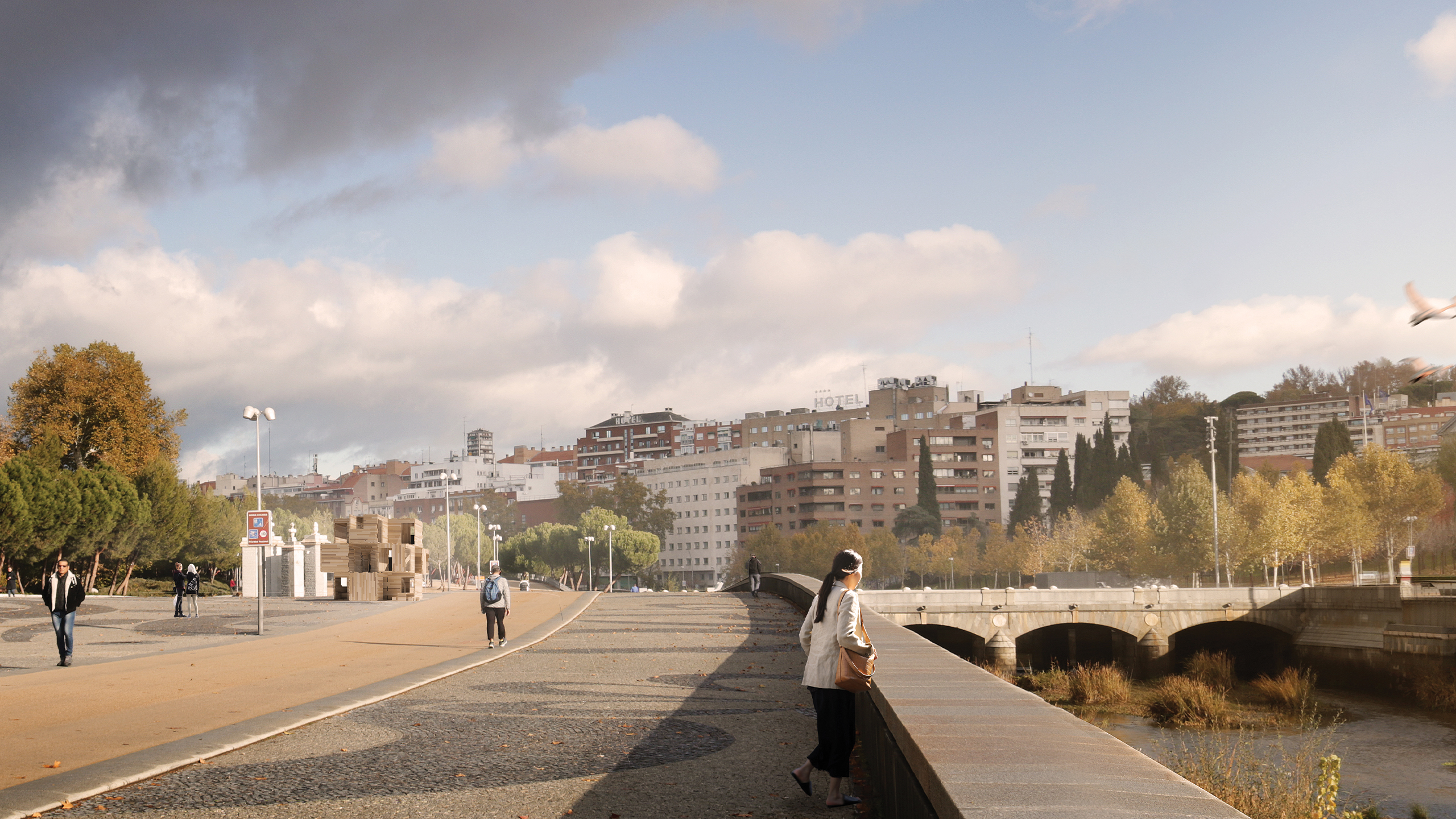
MultiPly is comprised of a maze-like series of interconnected spaces that overlap and intertwine. It has been conceived and constructed to encourage visitors to re-think the way we design and build our homes and cities.
The three-dimensional structure is constructed from a flexible system of 12 CLT modules of American tulipwood with digitally manufactured joints, as if it were a piece of furniture ready to assemble.
Because it is composed of modules, the construction can be disassembled and reassembled. It was first shown as part of London Design Festival in 2018, in the Sackler Courtyard of the Victoria and Albert Museum, outside the Building Centre in London with New London Architecture, and then at the Universite deglie Studi di Milano, as part of Interni’s ‘Human Spaces’ exhibition at Milan Design Week 2019, and is presented here in Madrid for its fourth iteration.
"The main objective of this project is to publicly discuss how environmental challenges can be addressed through innovative and affordable construction," says Andrew Waugh, co-founder of Waugh Thistleton Architects - a practice that has been at the forefront of wood construction for decades. "We are at a point of crisis in terms of housing and CO2 emissions and we believe that building with a versatile and sustainable material such as tulipwood is an important way to address these problems."

In 2018, the population of the Eurozone’s fastest growing major economy, Spain, increased to 47 million – the fastest annual growth since 2009. In order to keep up with population growth in ever-expanding cities, in a way that is not harmful to our planet, it is crucial to utilise new technologies that use sustainable materials. Off-site timber construction, that can provide quick-to-assemble, high quality housing with low carbon emmisions, provides a viable solution.
"Waugh Thistleton Architects have been pioneers in innovative uses of wood in construction for decades. MultiPly explores a new and more sustainable form of construction that combines an available negative carbon material, such as American tulipwood, with modular design," says David Venables, European Director of AHEC.
ABOUT TULIPWOOD
Tulipwood grows throughout the U.S. hardwood forests, where the forest area is expandind at a rate of one football field per minute and currently exceed 110 million hectares, equivalent to the area of France and Spain combined. This makes it a sustainable and environmentally friendly material, especially considering that it is one of the most abundant hardwoods in the United States and constitutes 7.7% of the total volume of standing timber in the hardwood forests of North America. Even after harvest, the volume of tulipwood in the U.S. forests. Increases by 19 million cubic metres per year.
ABOUT MULTIPLY
During the day, the eight-metre high American tulipwood installation promises to be fun and playful. The labyrinthine spaces lead visitors through a series of stairs, corridors and open spaces, inviting them to explore the potential of wood in architecture. In the evenings, with subtle lighting designed by SEAM, the pavilion becomes a quiet and contemplative space, allowing visitors to reflect on the beauty of its natural material.
"The structure will lead people in a joyful dance up and down stairs and crossing bridges, exploring light and space," says Andrew Waugh.
ABOUT CROSS LAMINATED TIMBER
MultiPly uses a wood engineering technique known as cross-laminate where boards of one layer are placed perpendicularly to the boards of the next layer and glued to form very strong, rigid and stable panels. CLT has been traditionally manufactured with coniferous wood. However, AHEC and Arup have been experimenting with cross-laminated American tulipwood for a decade, which is a fast-growing hardwood. Research and projects have shown that, by comparing identical weights, CLT tulipwood is stronger than steel and concrete and can be machined with incredibly high precision. This makes it ideal for prefabrication and rapid assembly, reducing construction times by around 30%. Tulipwood is an economical and easy to machine timber and incredibly strong for its weight. The use of tulipwood CLT means that large-scale wooden buildings can be built without the use of concrete or steel. These properties, together with its impressive appearance, make tulipwood a perfect pioneer for innovative wood construction.
ABOUT MODULAR CONSTRUCTION
Modular housing is a modern method of construction, which allows us to build houses quickly. As most of the construction takes place offsite, the effeciency achieved in a factory enviroment enable us to deliver good quality homes quickly, minimizing disruption to the local community. Modular timber construction offers a way to build more sustainably, using renewable and energy-efficient materials. These have the unique advantage of producing structures that act as carbon stores during the lifetime of a building.
For more information about MultiPly, click here.
For press materials, click here.